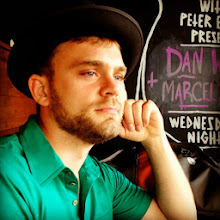
Egyptian revolution in 2011
With the revolution in Egypt at the forefront of many minds, I'm returning to an interview I did while in Boston a few weeks ago. I met with a freelance journalist and activist Dan Feder one night and told him about my project for "Work". I went into my reasons, my inspiration, and my thoughts on doing political art. Mostly he asked me for my motivations, and he also talked to Anabel Vázquez the curator and then the article came out the following day. Notably it's in spanish, written for an immigrant audience in the Boston area and to the people involved at La Galleria at Villa Victoria.
I'm aware of some of Dan's work in the past, he formerly wrote for The Narco News Bulletin which presents journalism on many topics related to injustice, the corruption involved within our government, the war on drugs, and political movements in central and south America and the world. I have read only a few pieces, but it's powerful stuff. Here's one link to an article by Dan in 2005 detailing research that uncovered the complicity of the CIA in funneling U.S. drug profits to fund a "contra army to spend the entire decade terrorizing the Nicaraguan people and their Sandinista government." Seeing what Dan wrote about, I can only imagine his reaction to my work, which is left-leaning but hardly revolutionary, and he asked my curator this question (strange he didn't ask me), "Do you think Naughton's type of work can replace popular activism?". At least it was something along those lines. For some time I have dealt with that issue wondering about the efficacy of art and it's power to sway people, governments or popular opinions. My conclusion has always been that my work is a part of a continuum of action and that it plays one part along side investigative journalism, protest rallies, community activism and mass media attention. Each segment of the whole does one part in getting ideas to the masses, and I don't see one having greater impact over others. Protests happen and the media doesn't cover them. Articles are written but not distributed nationally by major news carriers. Art shows are staged, and only a certain audience takes in the work. My conclusion is that raising the visibility of human rights issues is a collective effort and we all contribute in our own way.
Today on NPR I listened to a story about the musician Conor Oberst of Bright Eyes who held an activist concert responding to Nebraska immigration issues. He was reacting to a small town effort to alienate and force out immigrants who have moved to Fremont, NE to take jobs at meat packing plants. The law, which passed last summer, made it illegal to hire or rent to illegal immigrants in Fremont. Surely the legislation will be subject to court battles with the ACLU, and the concert that Oberst held was a benefit raising money to donate to that cause. Again it's an effort by an artist to use their voice to spread word about a human rights issue. The part of the interview with Oberst was the questions directed at the concert goers. NPR made the case that those in attendance at the show were there for their love of indie rock, and not for their support of the cause. This result shows how the powerful can utilize their influence despite the contrasting motivations of their adoring consumer followers. If only more of our rich and famous upper crust would use the great powers that they have in mobilizing people towards important causes. Actions in favor of human rights will probably never be a mainstream struggle, but the work of a few can make a difference.

Fernando Botero with one painting from the series Abu Ghraib


No comments:
Post a Comment